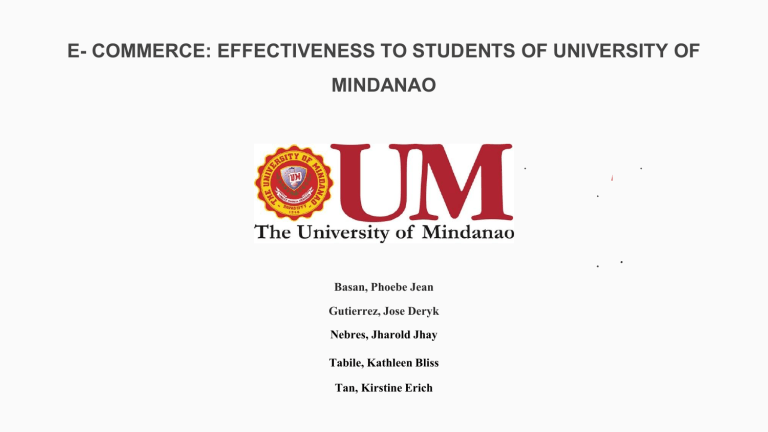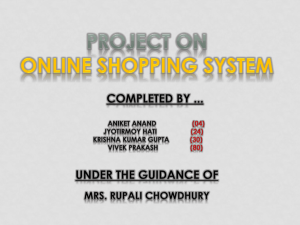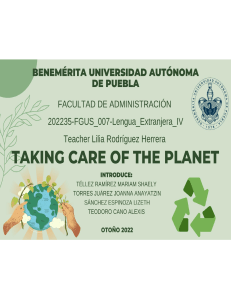
E- COMMERCE: EFFECTIVENESS TO STUDENTS OF UNIVERSITY OF MINDANAO Basan, Phoebe Jean Gutierrez, Jose Deryk Nebres, Jharold Jhay Tabile, Kathleen Bliss Tan, Kirstine Erich RATIONALE Electronic commerce, also known as e-commerce, is a broad sector that can be conducted on computers, tablets, smartphones, and other smart devices. According to McFerrin (2021), e-commerce started way back in 1979, by an English Inventor Michael Aldrich. The leading online e - commerce companies in the Philippines are Shopee and Lazada, which particularly rose during the current pandemic. This study attempts to understand how e-commerce affects students, how they greatly profit from it, and how beneficial it is for University of Mindanao students RATIONALE According to a study by Nursikuwagus and Sagala (2019) “For ecommerce students, it can make a student learn to take advantage of business opportunities easily. Students at the University of Mindanao's Bolton Branch and Matina campuses already use e-commerce extensively. Posting their goods on the student's Facebook page is one method. Students gain greatly from e-commerce and its potential to become the new standard outside of universities. RATIONALE Most studies with respect to increasing demand for e-commerce or online shopping to convenience or flexibility as the primary reason. However, by including the aspect of experience of University of Mindanao students, new perspectives may emerge. A statistical analysis will be used to gather as much information as possible about the factors that are influencing UM students towards e-commerce. The researchers will also study existing literature about the subject for existing data to lay the foundation for the research RATIONALE The study of effectiveness of e-commerce to students of University of Mindanao can be a learning paradigm in the field of business, especially in the field of online business, and students. This study is meant to assist the students in University of Mindanao in enhancing their information on how beneficial and advantageous the usage of e-commerce. It also assists online businesses in implementing a specific system to ensure the effectiveness of e-commerce to their customers and buyers. RATIONALE This study will be using the SCT or Shopping Continuum Theory by Eung Jung Choi. To explain consumers' shopping decisions in the setting of online shopping. This SCT discusses how people engage cognitively and emotionally with shopping environments to make decisions about what to buy. CCT or the Cognitive Continuum Theory. According to the level of cognitive activity that is predicted by the tasks, the properties of reasoning vary in degree. References Cognitive Continuum. (2016, April 18). Judgment and Decision Making. https://j-dm.org/archives/1923 Choi, E. J. (2008). A NEW SHOPPING CHOICE PROPOSITION: “SHOPPING CONTINUUM THEORY” FOR ONLINE SHOPPING. http://gebrc.nccu.edu.tw/proceedings/APDSI/2004/pdf/076.pdf Nursikuwagus, A. (2019, October 1). Impact of Electronic Commerce Technology for Students - EUDL. https://eudl.eu/doi/10.4108/eai.18-72019.2287936 Philippines 2022: Top online marketplaces. (2022, August 9). Vinculum Group. https://www.vinculumgroup.com/philippines-2022-top-onlinemarketplaces/ McFerrin, J. (2020, April 24). The History of eCommerce: How Did it All Begin? IWD Agency. https://www.iwdagency.com/blogs/news/thehistory-of-ecommerce-how-did-it-all-begin The History Of Ecommerce: How Did It All Begin? (n.d.). https://blog.miva.com/the-history-of-ecommerce-how-did-it-all-begin






